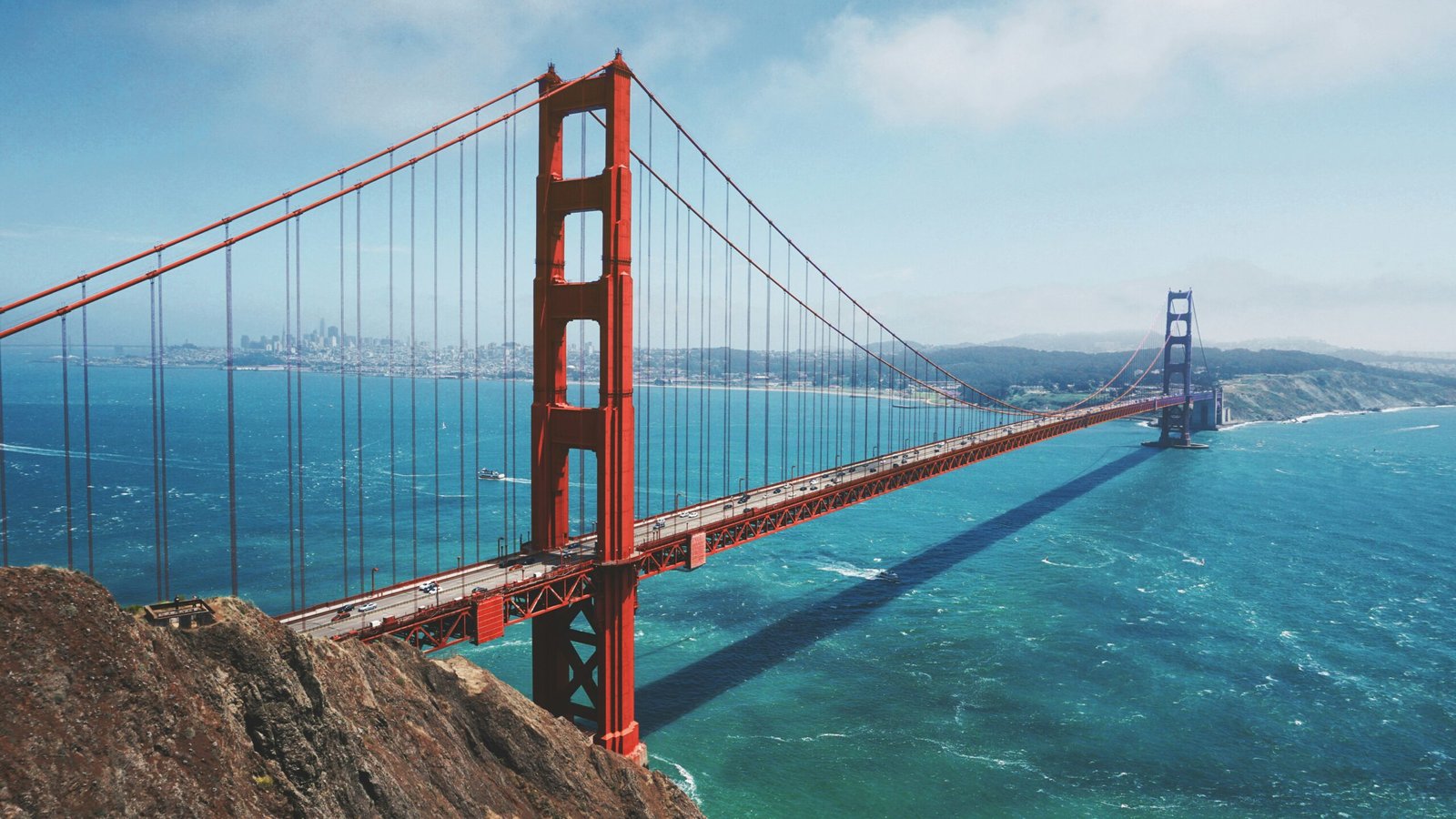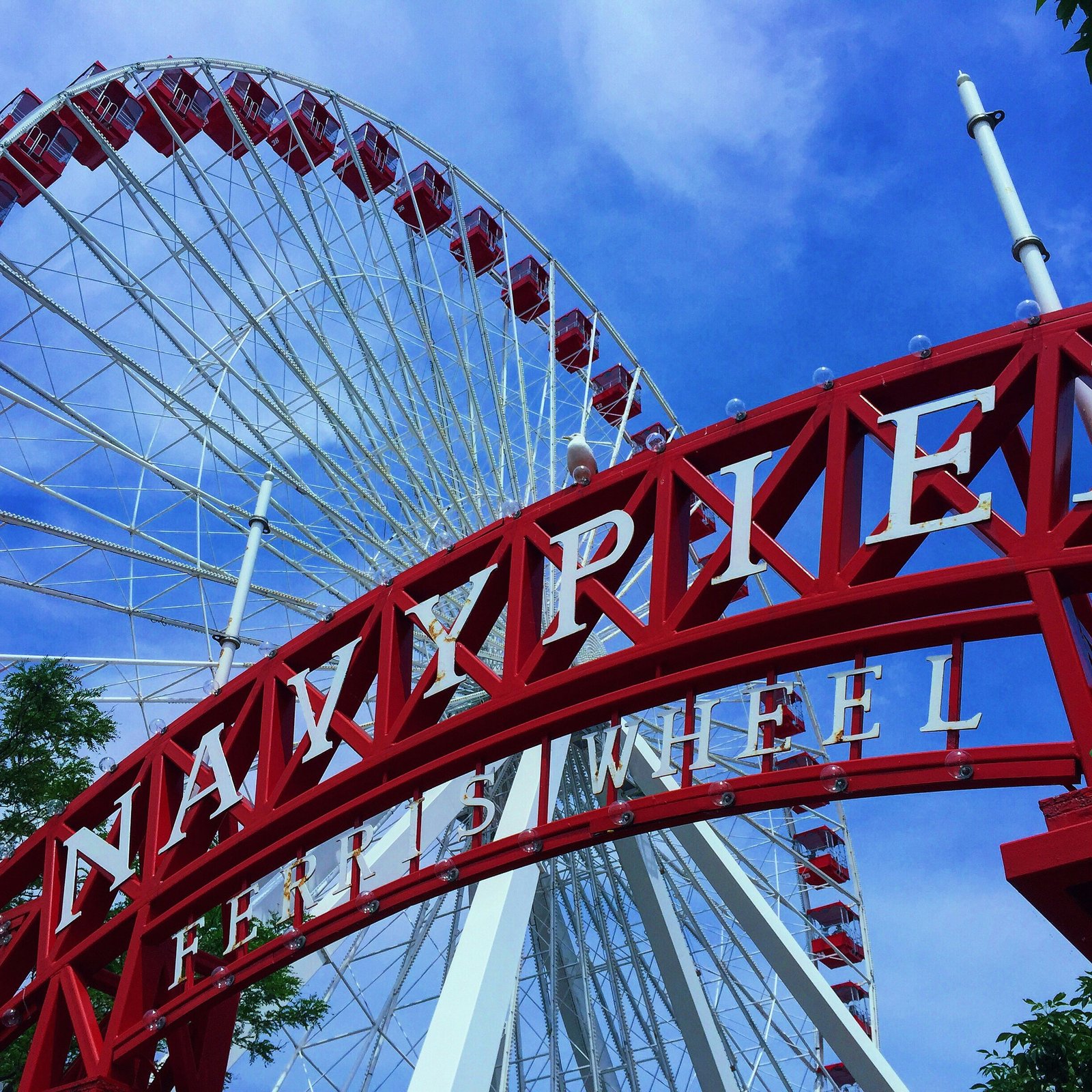
Construction of the Golden Gate Bridge began in 1933 and was completed in 1937. At the time of its completion, it was the longest suspension bridge in the world, with a total length of 1.7 miles. The bridge was designed by engineer Joseph Strauss, who overcame numerous challenges to create this engineering marvel.
One of the most remarkable aspects of the Golden Gate Bridge is its color. The bridge’s vibrant red-orange hue, known as “International Orange,” was chosen to enhance its visibility in the foggy conditions that often envelop the area. This color has become synonymous with the bridge and has contributed to its unique identity.
Not only is the Golden Gate Bridge visually stunning, but it also offers breathtaking views of the surrounding landscape. From the bridge, visitors can admire the picturesque San Francisco Bay, with its sparkling blue waters and distant hills. On clear days, the bridge provides a panoramic view of the city’s skyline, with its towering skyscrapers and iconic landmarks such as Alcatraz Island.
Aside from its aesthetic appeal, the Golden Gate Bridge is also a vital transportation link for the San Francisco Bay Area. On average, more than 100,000 vehicles cross the bridge each day, making it an essential artery for commuters and tourists alike. Pedestrians and cyclists can also enjoy the bridge’s dedicated walkway, which offers a unique perspective and a memorable experience.
Over the years, the Golden Gate Bridge has become a symbol of San Francisco’s rich history and progressive spirit. It is a testament to human ingenuity and engineering prowess, standing as a testament to the city’s ability to overcome challenges and push boundaries.
Today, the bridge remains a popular tourist attraction, drawing millions of visitors from around the world. Whether it’s capturing the perfect photograph, taking a leisurely stroll, or simply marveling at its grandeur, the Golden Gate Bridge offers something for everyone. It is a true icon of San Francisco and a must-visit destination for anyone exploring the city.
The construction of the Golden Gate Bridge was a monumental feat of engineering that pushed the boundaries of what was thought possible at the time. The design of the bridge incorporated several innovative features that allowed it to withstand the harsh conditions of the Golden Gate Strait.
One of the key challenges faced by the engineers was the strong currents in the area. The strait is known for its powerful tidal flows, which can reach speeds of up to 7 knots. To counteract the effects of these currents, the bridge was designed with a deep foundation that extended 90 feet below the water’s surface. This provided a stable base for the bridge to anchor onto, ensuring its structural integrity.
Another challenge was the dense fog that often engulfs the Golden Gate Strait. This posed a significant risk to navigation and required the bridge to be highly visible to passing ships. To address this, the bridge was painted in a vibrant red-orange color, known as “International Orange.” This color not only made the bridge stand out against the fog but also became an iconic symbol of the city of San Francisco.
The strong winds in the area were also a major concern during the construction process. The bridge needed to be able to withstand gusts of up to 70 miles per hour without compromising its stability. To achieve this, the engineers incorporated a unique suspension system that allowed the bridge to flex and sway with the wind. This flexibility not only ensured the bridge’s durability but also provided a smoother ride for vehicles crossing it.
When the Golden Gate Bridge was completed in 1937, it quickly became a symbol of American engineering prowess. Its impressive length of 1.7 miles and its graceful design made it an instant icon. Today, the bridge continues to be one of the most recognized and beloved landmarks in the world, attracting millions of visitors each year.
Design and Architecture
The Golden Gate Bridge is known for its unique design and architectural beauty. It is a suspension bridge, with two main towers and a main span of 4,200 feet. The bridge is supported by steel cables that are anchored to the towers and the ground.
One of the most striking features of the bridge is its color. The bridge is painted in a distinctive red-orange color called “International Orange.” This color was chosen to enhance the bridge’s visibility in the foggy conditions of the area and has since become an iconic symbol of the bridge.
The design of the Golden Gate Bridge is not only visually appealing but also highly functional. The suspension design allows the bridge to withstand the strong winds that sweep through the Golden Gate Strait. The cables that support the bridge are made of high-strength steel, ensuring the bridge’s stability and durability.
In addition to its functional design, the Golden Gate Bridge is a testament to the architectural prowess of its creators. The Art Deco style of the bridge’s towers and the intricate detailing on the bridge’s railings and light fixtures showcase the attention to detail and craftsmanship that went into its construction.
The bridge also features a pedestrian walkway and a bike path, allowing visitors to enjoy stunning views of the San Francisco Bay and the surrounding landscape. Whether you walk, bike, or drive across the bridge, the experience is truly unforgettable.
Overall, the Golden Gate Bridge stands as a remarkable example of engineering and architectural excellence. Its unique design, vibrant color, and breathtaking views make it a must-visit landmark for tourists from around the world.
Attractions and Activities
Visiting the Golden Gate Bridge offers more than just admiring its beauty. There are several attractions and activities that you can enjoy in the area:
1. Golden Gate Bridge Welcome Center
Located at the southern end of the bridge, the Golden Gate Bridge Welcome Center is a great place to start your visit. Here, you can learn about the history and construction of the bridge through informative exhibits and displays. The center also offers breathtaking views of the bridge and the surrounding area.
As you enter the Welcome Center, you’ll be greeted by friendly staff who are eager to share their knowledge about the bridge. The exhibits provide a comprehensive overview of the bridge’s construction, from its inception to its completion. You’ll learn about the challenges faced by the engineers and the innovative solutions they came up with to build this iconic structure.
One of the highlights of the Welcome Center is the observation deck, which offers panoramic views of the bridge and the San Francisco skyline. From here, you can see the intricate details of the bridge up close, marvel at its impressive size, and capture stunning photographs to commemorate your visit.
2. Crissy Field
Crissy Field is a beautiful park located near the bridge. It offers stunning views of the bridge and the San Francisco Bay, as well as picnic areas, walking trails, and a beach. It’s a perfect spot for a leisurely stroll or a family outing.
As you explore Crissy Field, you’ll be surrounded by the natural beauty of the area. The park is home to a diverse range of plant and animal species, making it a haven for nature lovers. You can take a leisurely walk along the waterfront, breathing in the fresh sea air and enjoying the peaceful ambiance.
For those looking for more adventure, Crissy Field offers a variety of recreational activities. You can rent a bike and cycle along the scenic trails, go kayaking or paddleboarding in the bay, or even try your hand at windsurfing. The park also has designated picnic areas where you can relax and enjoy a meal while taking in the breathtaking views.
3. Fort Point National Historic Site
Located at the base of the Golden Gate Bridge, Fort Point is a historic fort that played a significant role in the defense of San Francisco during the Civil War. Today, it is a national historic site that offers guided tours and exhibits about the fort’s history. The fort also offers magnificent views of the bridge.
Stepping inside Fort Point is like stepping back in time. The fort has been meticulously preserved, allowing visitors to experience what life was like for the soldiers stationed here. As you explore the various rooms and corridors, you’ll learn about the fort’s strategic importance and the challenges faced by its inhabitants.
The highlight of a visit to Fort Point is undoubtedly the breathtaking views of the Golden Gate Bridge. From the fort’s vantage point, you can see the bridge in all its glory, with the majestic towers rising above the water. It’s a sight that never fails to impress and serves as a reminder of the bridge’s engineering marvel.
4. Golden Gate Park
While not directly adjacent to the bridge, Golden Gate Park is a must-visit attraction in San Francisco. Spanning over 1,000 acres, the park offers a variety of activities including museums, gardens, lakes, and trails. It’s a great place to relax and unwind after exploring the bridge.
Golden Gate Park is a haven for nature enthusiasts and art lovers alike. The park is home to several world-class museums, including the de Young Museum and the California Academy of Sciences. Art lovers can admire masterpieces from around the world, while science enthusiasts can explore interactive exhibits and learn about the natural world.
In addition to the museums, Golden Gate Park boasts beautiful gardens that showcase a wide variety of plant species. The Japanese Tea Garden is a tranquil oasis with carefully manicured landscapes, traditional pagodas, and a serene pond. The Botanical Garden is home to an extensive collection of plants from around the world, making it a paradise for botany enthusiasts.
For those looking for outdoor activities, Golden Gate Park offers plenty of options. You can rent a paddleboat and explore Stow Lake, go for a jog or bike ride along the park’s many trails, or simply find a quiet spot to have a picnic and soak in the natural beauty of the surroundings.
5. Bridge Tours
If you want to learn more about the bridge’s history and construction, consider taking a guided tour. There are several tour companies that offer informative and entertaining tours of the bridge. Some tours even take you to the top of the bridge’s towers, providing a unique perspective and breathtaking views.
A guided tour is a fantastic way to delve deeper into the fascinating history of the Golden Gate Bridge. Knowledgeable guides will share interesting anecdotes and stories about the bridge’s construction, its iconic status, and the impact it has had on the city of San Francisco.
Depending on the tour you choose, you may have the opportunity to go inside the bridge’s towers and see the inner workings of this engineering marvel. From the top, you’ll be treated to unparalleled views of the city, the bay, and the Pacific Ocean. It’s an experience that will leave you in awe of the bridge’s grandeur and the ingenuity of its designers.
Whether you choose to explore the Golden Gate Bridge Welcome Center, visit Crissy Field, tour Fort Point, explore Golden Gate Park, or take a guided tour, there is no shortage of attractions and activities to enjoy in the area. Each offers a unique perspective on the bridge and its surroundings, ensuring that your visit will be both educational and memorable.



